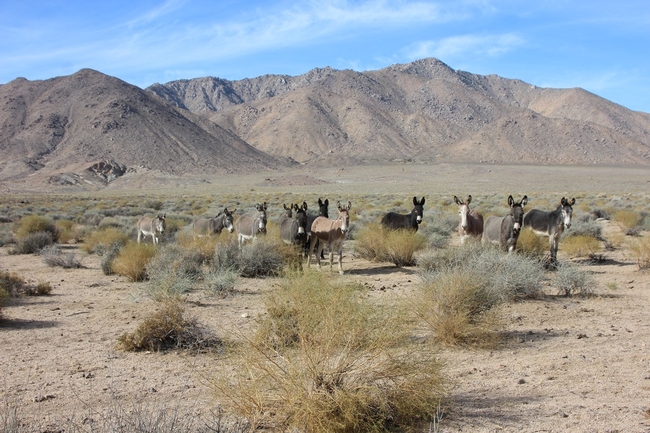The National Park Service has contracted with Peaceful Valley Donkey Rescue to humanely remove 2,500 to 4,000 burros in Death Valley National Park, a particularly challenging effort because the Bureau of Land Management, which manages adjoining land, does not consider the non-native equines a problem, reported Miranda Willson in the Las Vegas Sun.
The rescue organization rounds up the burros and puts them up for adoption.
Experts say the burros damage vegetation near the park's desert springs, which support rare and endemic fish, plants, invertebrates and insects. They also compete with native grass-eating mammals — like endangered desert bighorn sheep — for food and access to increasingly rare watering holes, according to Laura Snell, livestock and natural resources adviser at the University of California Cooperative Extension.
“We've seen quite a bit of competition at watering holes throughout Nevada and northeast California,” Snell said. “All of those animals need water, and there's maybe only one watering hole available year-round.”
Executive director of Peaceful Valley Donkey Rescue Mark Meyers said wild burros are a part of American history that people can experience and preserve by adopting them.
“We used them for the Spanish Trail, we used them for Catholic mission systems, we used them for the railroad, we used them for mining. We used them for all these capacities, and then we said, ‘We don't need them anymore,' ” Meyers says. “These animals built our country, yet they're the ones that aren't supposed to be here.”
